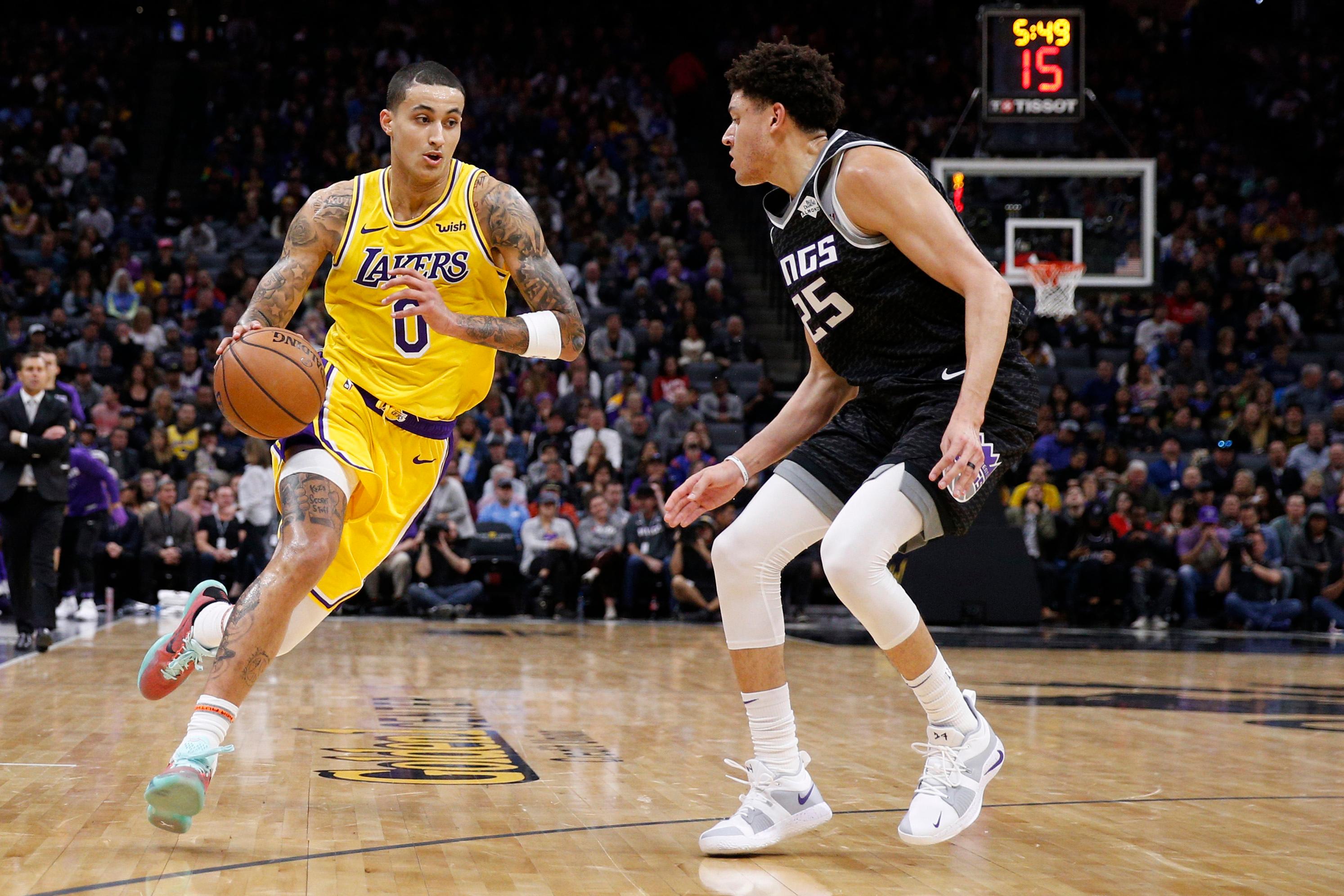
Kyle Kuzma was almost the hero Thursday night against the Kings. He scored 33 points, dropping five in the final minute and a half to give the Lakers a three-point lead with 41 seconds left. But after De’Aaron Fox sank two free throws, Kuzma drove headfirst into the lane looking for a driving layup to make it a two-possession game. He missed badly. Then Kuzma fouled Justin Jackson on a 3-point shot. After Bogdan Bogdanovic hit a 3-point buzzer-beater, the LeBron-less Lakers walked out of a Sacramento with a gutting one-point loss. Their spry youth and fast-paced style had fueled them to a 15-point lead with less than seven minutes left, but that same youth was also a part of what made them stumble in the final seconds.
Injuries have affected plenty of teams this season (see: the Pelicans), but for a team like the Lakers, losing LeBron James—who is day-to-day with a left groin strain, and is expected to miss a few games—is a loss of identity as much as it is one of supreme talent. Thursday was a clear, even if singular, example of what L.A. looks like without the best player in the world on the floor. Kuzma’s shots in crunch time would have likely been taken by LeBron, or even better, would have been clean spot-up looks following a LeBron penetration drive leading to a kick-out pass. LeBron’s shotmaking may be replicable to an extent; his gravity is not.
It’s unclear how long LeBron will be out, but so far this season, the Lakers modus operandi has been to work out the kinks in their system while relying on LeBron to bail them out late if need be. The reason they’re 20-15 is because he’s done just that. Sure, the Lakers defense has improved—in the last 15 games, they’ve had a top-5 unit in the league—but some of the same half-court offense and rotation problems ail them, LeBron or not. Yet at the end of any game, LeBron gives them the best chance to eke out a win. The equation changes now, and the pressure falls on the rest of the Lakers—particularly the young core.
So far this season, most of the young Lakers have been focused on fitting around and alongside LeBron. Kuzma is an example of a wing whose game is vastly improved by playing alongside LeBron; as a scorer and off-ball cutter, he’s fit in well. Lonzo Ball has slowly developed a chemistry with LeBron as a budding playmaker and passer. Brandon Ingram, on the other hand, has struggled to find his role more than most; all of Ingram’s stats improve when LeBron is not on the floor and he’s regressed in points, rebounds, assists, field goal, free throw, and 3-point shooting. The Lakers changing their style of play on the fly in order to be more assertive will be a challenge. How the young core plays without LeBron will determine the Lakers’ short-term fate and may also provide a look into the individual development and improvement of each player. That’s important when it comes to long-term planning for a franchise with championship goals.
One thing to watch during this stretch is who takes on the role of primary ball handler. On Friday, it was reported that Rajon Rondo would undergo hand surgery and be out for at least another month. It’s clear the Lakers are still trying to plug Ingram into that role when not using Ball, which forces this version of Ingram as a playmaker and the second in line to LeBron. (Ingram’s locker is even next to LeBron’s). But the 21-year-old is much more effective as a tertiary option who needs to be set up in order to succeed—not a player with a starring role who can be left to his own devices. During crunch time against the Kings Thursday night, the Lakers had Ingram initiate the offense when Ball went out with a calf injury, but the ball often ended up in Kuzma’s hands, leaving him to scramble to create shots in isolation like he was Kobe Bryant. Or rather, like he was the guy who has been closing games for the Lakers: LeBron James. No matter how much the team wants him to be The Guy, Ingram just hasn’t had that kind of pull.
On Thursday, the Lakers played like a young team—an only slightly more refined and better version of last season’s squad. Ingram, Ball, and Kuzma all scored 20 points or more, but as a team, they coughed up the ball 18 times, got outrebounded by seven on the offensive boards, and gave up 22 second-chance points. It felt like the Lakers of old, though without the endearing cloak of development. This season, slow growth is not good enough. The pressure is on, and even more so with LeBron out.
The NBA season is a marathon, not a sprint. But in the West, the marathon pace is that of a 100-meter dash. Only four games separate the 1-seed and the 10-seed, and depending on how long LeBron is out, the Lakers may find themselves toward the bottom half of the conference by the time he returns. This season, dropping a game—even a December game against the Kings—may be the difference between home-court advantage in the first round or missing out on the playoffs altogether. With LeBron, the Lakers can be a great team. Without him, they are a good team walking on a tightrope; there’s just no safety net below.